Women Health is made up of many aspects. An important place is given early diagnosis diseases of the gynecological sphere and their adequate treatment. But it is far from always possible to avoid invasive interventions. And one of those methods is scraping. cervical canal. Many women, hearing something like this, are seriously alarmed. But such a diagnostic and treatment procedure is common everywhere, and there is no reason to think that it can be dangerous. You just need to know when it is carried out, how exactly and what should be done after the manipulation. These are the main questions to be considered.
The essence of the method
Curettage is an instrumental "cleaning" of the cervical canal or uterine cavity. Inside they are lined with a cylindrical epithelium with a glandular component. And often it has to be removed mechanically. Although a similar process takes place in the female body every month during menstruation, the doctor needs to make sure that the mucous membrane develops correctly at all stages. That's what this operation is for.
Indications
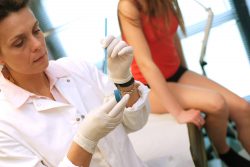
The cervical canal is scraped in cases where confirmation is required pathological process in the cervical area or eliminate it. Therefore, the range of indications for manipulation is very wide. The conditions under which it is necessary to carry out curettage include the following:
- Polyps.
- Myomas.
- Glandular cystic hyperplasia.
- Pseudo-erosion.
- Adenomyosis.
- Dysplasia.
- Cervical cancer.
- Uterine bleeding (especially in menopause).
In addition, the procedure is carried out after spontaneous abortion to completely clean the uterus and make sure there are no parts gestational sac. Infertility is also an indication for curettage - in order to determine the barrier to pregnancy associated with endometrial pathology. Thus, this operation is used as a diagnostic and therapeutic method for various gynecological pathology. And in order to increase its informativeness and efficiency, they can additionally carry out cervicoscopy with a biopsy.
Contraindications

Accounting for indications for curettage is not all. It is equally important to determine if the woman has conditions that limit the use of the procedure. Indeed, in some cases it is contraindicated. And this is possible in such cases:
- Inflammation (cervicitis).
- Infectious diseases.
- Normal course of pregnancy.
The last aspect should always be taken into account, because during the expansion of the cervical canal, conditions are created for abortion on early dates(spontaneous abortion). And curettage of the cervical canal, carried out during inflammatory processes, allows the infection to spread to deeper layers and is characterized by further complications.
The procedure for curettage of the cervical canal is performed only if indications and contraindications are carefully taken into account.
Training
In order for the operation to be successful and the expected result to be obtained, it is necessary to carry out preliminary preparation. First of all, a woman should go gynecological examination and additional testing:
- General blood and urine tests.
- Blood test for biochemistry: antibodies to infections (herpes, chlamydia, trichomoniasis, syphilis, HIV, hepatitis), coagulogram.
- A smear from the cervical canal (for cytology and microflora).
- Analysis of secretions (bacteriological, PCR).
- Colpocervicoscopy.
- Ultrasound of the pelvis (transvaginal).
- Electrocardiogram.
The results of the studies allow us to confirm the diagnosis and exclude conditions that are a limiting factor for curettage. During the week, a woman should not take drugs that affect the blood coagulation system. On the eve of the procedure, it is necessary to refrain from sexual intercourse and the use of funds intimate hygiene(use only water), and immediately on the day of the procedure, come to the doctor on an empty stomach.
Holding
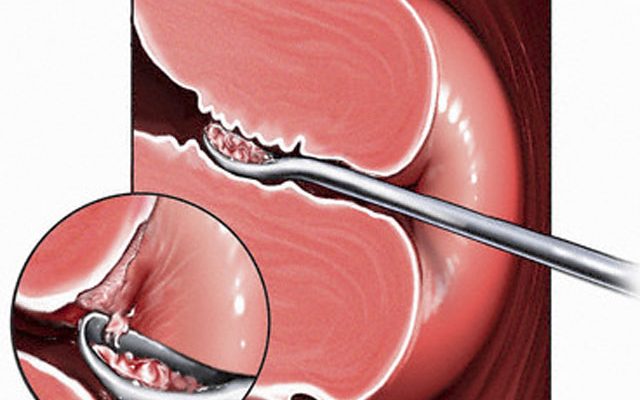
The procedure is most often performed in the second phase menstrual cycle to minimize the risk of bleeding. The woman is located on the gynecological chair. Before carrying out any manipulations, the doctor treats the vagina and cervix with antiseptic solutions (sanation). Then you need to do local anesthesia. And only after that the gynecologist proceeds to the procedure itself.
The cervical canal is gradually opened with the help of special dilators of different diameters. Then a metal instrument is introduced into it - a sharp curette that looks like a spoon. It carefully scrapes the surface (functional) layer columnar epithelium, while the basal remains untouched. If necessary, then a cervicoscopy is done before this, and if an obvious pathological focus is detected, a piece of tissue is taken by biopsy. The resulting material is placed in separate plastic containers for further histological examination.
The presence of endometrial pathology is a situation in which separate diagnostic curettage. That is, first they do a “cleansing” of the uterine cavity, and then the cervical canal. These tissues are analyzed separately. The procedure itself takes about 40 minutes. And the results of histological examination will be received no earlier than in 10 days.
Only a qualified and experienced specialist can scrape the cervical canal. Although this procedure is not difficult, but it requires compliance with all the rules.
Effects
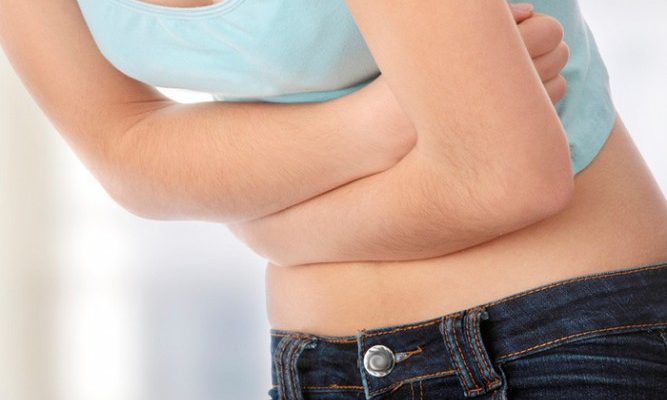
If curettage of the cervical canal has already been carried out, then the woman is in the ward of the gynecological department for several more hours under the supervision of the attending physician. Then she is allowed to go home, warning about the course of the postoperative period. Normally, over the next days, there may be sanious or bloody issues from the genital tract. This is a common mucosal response to injury. If the patient noticed that there was pain in the lower abdomen, severe bleeding or a rise in body temperature, then you definitely need to contact the doctor who performed the procedure. After all we are talking about the occurrence of complications.
But in addition to the inflammatory process and bleeding, other adverse consequences for a woman in a later period are also likely:
- Adhesions and scars.
- Neck failure.
- Myoma nodes.
- Endometriosis.
But similar states are extremely rare and cannot be considered grounds for refusing a procedure, the value of which far outweighs the potential risk. If the operation was performed without technical violations, by qualified personnel and with the appropriate equipment, then there is no need to fear complications. And in order to quickly recover after scraping, you should adhere to the following simple rules:
- Refrain from sexual intercourse.
- Refuse thermal procedures (bath, sauna).
- Avoid swimming in the pool and taking a bath.
- Follow hygiene recommendations.
- Avoid physical activity.
- Do not take blood thinners (antiplatelet agents and anticoagulants).
When curettage was carried out for diagnostic purposes, it allows you to establish the correct diagnosis, and therefore plan further therapeutic measures. BUT medical procedure makes it possible to remove the pathological tissue inside the cervical canal and in most cases save the patient from the disease. But for everything to go smoothly, you should follow all the recommendations of the doctor: both before and after the operation.
Surgical manipulation, the essence of which is scraping (or scraping) of the functional layer of the uterine mucosa.
Service cost
Curettage of the uterine cavity- this is a surgical manipulation, the essence of which is scraping (or scraping) of the functional layer of the uterine mucosa. The term is also used RDV ("separate diagnostic curettage")- it is called separate, since it is carried out in stages - first, the cervical canal is scraped, and then (separate manipulation) - the uterus itself; It is called diagnostic because the resulting scraping will be sent for histological examination to establish an accurate diagnosis.
In the process of curettage, only the top layer of the endometrium is removed, so subsequently the uterine mucosa is restored.
The scraped material is sent for histological examination. This eliminates the possibility that the disease is malignant. This is the main purpose of curettage, carried out for diagnostic purposes.
Indications for scraping
- irregular periods, bleeding from the vagina between two periods;
- excessively heavy, prolonged or painful menstruation;
- bleeding from the vagina after menopause;
- difficulty conceiving a child or infertility;
- suspicion of uterine cancer.
- before a planned gynecological surgery or procedure for uterine fibroids.
Contraindications and possible complications during the curettage procedure
Absolute contraindications scraping are sharp infectious diseases and inflammatory processes of the genital organs.
With careful and right approach specialist to this manipulation complications can be avoided. However, you need to be aware of possible complications scraping:
- perforation of the uterus.
- Tearing of the cervix.
- Inflammation of the uterus. Occurs when microbes enter the uterus. Currently, to prevent infection of the uterus after curettage, doctors prescribe a course of antibiotics.
- Accumulation of blood in the uterine cavity (hematometra). If, after curettage, a spasm of the cervix occurs, blood, which normally should flow from the uterine cavity for several days, accumulates in it and can become infected and cause pain.
- Damage to the mucosa (excessive scraping) - if the scraping is done very hard and aggressively, the germ layer of the mucosa can be damaged, which will lead to the fact that new mucosa will no longer grow.
Preparation for the procedure
- Examination and consultation of a gynecologist.
- General analysis blood.
- Coagulogram (assessment of the blood coagulation system).
- ECG.
- Tests for hepatitis B and C, RW (syphilis) and HIV.
- Vaginal swab (there should be no signs of inflammation).
In 2 weeks before the curettage: stop taking any medications and dietary supplements (including herbal supplements) that have not been previously discussed with the doctor who will conduct the curettage. Some medicines can change blood clotting and increase the risk of bleeding. If you are taking medication for a serious illness (e.g. hypertension, arrhythmias, epilepsy) do not stop treatment, but be sure to tell your doctor about the medicines you are taking.
For 2-3 days before scraping:
- Avoid sexual intercourse.
- Do not douche and refuse to use any means of intimate hygiene. For the toilet of the genitals, use only warm water.
- Stop using any medications in the form of vaginal suppositories, tablets, or sprays, unless their use has been discussed with your doctor before the curettage.
- On the eve of the curettage, refuse food and drink 8-12 hours before the procedure. This is necessary for the safe administration of anesthesia.
Diagnostic curettage is performed before menstruation, a few days before it starts.
Anesthesia for diagnostic curettage
The operation takes place under intravenous anesthesia - this is a type of general anesthesia. Its duration is on average 15-25 minutes.
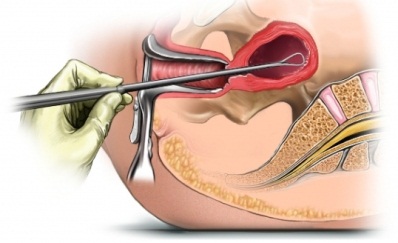 How is a separate diagnostic curettage performed?
How is a separate diagnostic curettage performed?
Curettage of the uterine cavity and cervical canal in our clinic is carried out in our own operating room, equipped in strict accordance with the current sanitary and hygienic standards. During the operation, anesthesia equipment is used with constant monitoring of the patient's condition, disposable materials, surgical equipment and instruments from leading manufacturers of medical equipment.
The patient is placed in the gynecological chair and the anesthesiologist performs intravenous anesthesia.
The doctor inserts a speculum into the vagina to expose the cervix. With special forceps (“bullets” at the ends of this instrument there is a clove) it catches the cervix and fixes it. With a special probe (iron stick), the doctor enters the cervical canal and penetrates into the uterine cavity, measuring the length of the cavity.
Curettage is performed with the smallest curette. A curette is an instrument similar to a spoon with a long handle, one edge of which is sharpened. The sharp edge is scraped. Scraping obtained from the cervical canal is placed in a separate jar. If curettage is accompanied by hysteroscopy, then after the expansion of the cervical canal, a hysteroscope (a thin tube with a camera at the end) is inserted into the uterine cavity. The uterine cavity, all walls are examined. After this, the uterine mucosa is scraped. If a woman had polyps, they are removed with a curette in the process of curettage. After the curettage is over, the hysteroscope is reintroduced and the result is checked. If something is left, the curette is reintroduced and scraped out until the result is achieved.
At the end of the diagnostic curettage procedure, the patient is transferred to a comfortable day hospital ward, where she remains under the supervision of an anesthesiologist and nursing staff until she fully awakens from anesthesia. After the end of the anesthesia, the patient can be discharged from the clinic.
Subsequent recovery after separate diagnostic curettage
Within a few hours after curettage, copious bleeding and bloody clots from the vagina may appear. This is normal phenomenon.
After a few hours, the discharge becomes less abundant. Scanty bloody, spotting, brown or yellowish discharge after scraping, they can persist for another 10 days. The rapid disappearance of discharge after curettage may be a sign of cervical spasm and accumulation of blood clots in the uterus. In this case, you must immediately consult a doctor.
Within 2 weeks after scraping it is forbidden:
- Have sex;
- Use vaginal tampons (regular pads can be used);
- Do douching;
- Take a bath, visit a sauna or bath (you can take a shower);
- Engage in heavy physical labor or intensive exercise;
- Take medicines containing acetylsalicylic acid(for example, aspirin).
! Seek immediate medical attention if... !
- you have stopped bleeding from the vagina very quickly and have pain in the abdomen;
- your temperature rises above 38°C;
- you have appeared severe pain in the abdomen that do not go away after taking painkillers;
- you experience heavy vaginal bleeding that quickly fills sanitary napkins and does not stop for several hours;
- you have profuse, foul-smelling vaginal discharge;
- your health deteriorates sharply, you experience dizziness, weakness or fainting.
Content
Curettage (curettage, cleaning) of the cervical canal - quite widely practiced gynecological operation. The procedure is carried out if necessary, differential diagnosis or confirmation of the diagnosis in the presence of certain symptoms.
What is called curettage of the cervical canal
The cervical canal (Cervix) is the isthmus that connects the uterine cavity and the vagina. It is thanks to this organ that the cavity of the reproductive organ is protected from infections, and through it the male germ cells penetrate into the uterus.
Since the cervical canal goes directly into the vagina, the infection initially develops in the latter. And then it rises higher. The gynecologist may suspect its infection during the examination. As a rule, the reason for the appointment of curettage is the presence of uncharacteristic in consistency or color of mucus in the cervical canal. A woman notes uncharacteristic discharge from the genital tract.
Smear cytology in some cases cannot give a complete clinical picture. Get the most useful information about the current state of the cervical canal helps curettage procedure.
The technique allows to identify the disease at the very beginning of its formation, which greatly simplifies the treatment of the detected pathology.
During curettage, only the upper layer of the mucous membrane of the cervical canal is removed, which is then completely restored.
Kinds
In gynecology, three types of curettage of the cervical canal are used.
- Diagnostic. Carry out, if necessary, tissue sampling for subsequent histological analysis.
- Separate diagnostic curettage (RDV). During the procedure, in addition to curettage of the cervical canal, curettage of the uterus is also carried out. Tissue sampling is performed alternately: first from the cervix, then from its cavity.
- RDV under the control of a hysteroscope. The procedure is controlled by a gynecologist using a special device. A tube equipped with a miniature video camera is placed in the uterine cavity. Thanks to this, the physician gets the opportunity to examine the mucous surfaces of the cervical canal and uterus. Curettage is also carried out under the supervision of a video camera.
All three types of curettage can be practiced not only for diagnostic purposes, but also for therapeutic purposes. They are carried out only in a hospital.
Indications
 Curettage of the cervical canal is carried out in the following cases.
Curettage of the cervical canal is carried out in the following cases.
- With the development uterine bleeding. Curettage of the cervical canal allows you to identify the cause of the pathology.
- In case of presence of synechia (intrauterine adhesions). The procedure is used to eliminate adhesive disease. It is carried out with the obligatory use of a hysteroscope.
- If the doctor suspects polyposis of the endometrium and cervix. Treatment of this pathology conservative methods gives no results. Therefore, the patient is treated with curettage of both the cervical canal and the uterine cavity.
- With inflammation of the endometrial layer. Before prescribing medicines, a woman undergoes curettage of the cervical canal and the uterus itself.
- With endometrial hyperplasia. Scraping the neck of the organ and its cavity helps to determine the cause of the development of pathology.
- In cases of presence of remnants of fetal tissues after an abortion or childbirth. Scraping is done to remove foreign bodies from the lumen of the cervical canal.
For the purpose of diagnosis, the technique is practiced in the following cases:
- when detecting changes in the uterus (endometrial layer) on ultrasound or on the basis of complaints;
- with prolonged and painful periods;
- when during menstruation large clots, lumps of mucus or other impurities come out of the uterus;
- with problems with conception;
- as preoperative preparation;
- when intermenstrual bleeding occurs.
Preparation and holding
Conducting diagnostic curettage of the cervical canal requires special training. The woman is scheduled to take the following tests:
- general clinical blood test;
- analysis of the vaginal microflora (smear);
- Ultrasound of the pelvic organs;
- coagulogram (blood clotting rate);
- blood test for hepatitis, HIV and syphilis.
To eliminate the risk of uterine bleeding scraping is carried out two to three days before the onset of menstruation.
Such terms of the procedure are as close as possible to the natural process of rejection of the mucous membrane.
The procedure for curettage of the cervical canal is quite painful, and therefore requires anesthesia. As a rule, the patient receives intravenous anesthesia and sleeps during the entire procedure.
Curettage of the cervical canal is carried out on a gynecological chair using a curette. All collected material is placed in formalin and transferred for histological examination. The total duration of cleaning is 20-40 minutes. Then the woman is awakened and transferred to the ward.
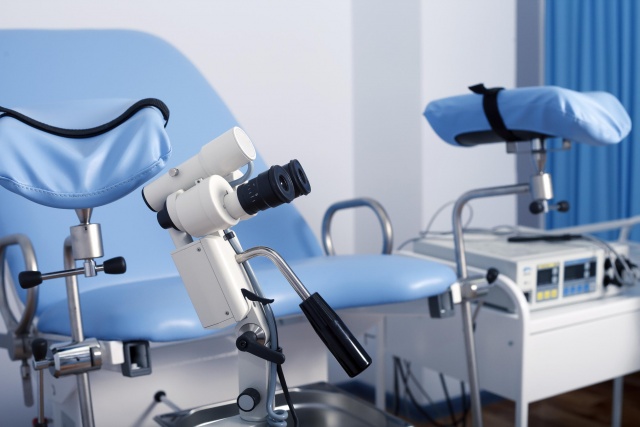
Scraping steps:
- The woman receives intravenous anesthesia.
- The skin of the genital organs is treated with antiseptics.
- The vagina is expanded with gynecological mirrors.
- The cervix is opened using a set of Hegar dilators. Then it is fixed in this state. With the help of a curette, the gynecologist performs curettage.
- The resulting fragments of the mucosa are placed in a sterile container and transferred to the laboratory for histological examination.
During scraping, only the top layer of the mucous membrane of the cervical canal.
Preparation also includes the following points:
- refusal of intimacy and irrigation of the vagina a week before cleaning;
- Do not eat or drink on the day of the procedure.
Possible Complications
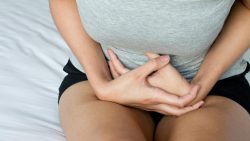 Doctors call the main complications after performing curettage of the cervical canal:
Doctors call the main complications after performing curettage of the cervical canal:
- tear or complete rupture of the neck;
- perforation of the uterine wall - with severe damage, an intracavitary operation may be required, during which the wound is sutured;
- infection as a result of non-compliance with the rules of asepsis and antisepsis by physicians;
- hematometer - accumulation of blood inside the uterus, provoked by spasm of the cervix;
- damage to the basal layer of the endometrium, the complication is caused by careless work of the doctor, in the future the functional layer of the endometrium is not formed.
The development of complications depends on the experience of the gynecologist performing the procedure.
Postoperative period
Within a few hours after cleaning, the woman will experience quite heavy bleeding. This is normal, because in this way the uterus is freed from the remnants of the damaged endometrium. Then the discharge becomes more scarce and continues for 7 to 14 days.
If after curettage of the cervical canal no blood discharge is observed, then this sign indicates a hematometer.
This must be reported to the gynecologist immediately. Otherwise, the risk of developing more serious complications is high.
In the next two weeks, it is necessary to abandon certain situations and procedures:
- sexual relations;
- douching;
- visits to baths and saunas;
- heavy physical exertion.
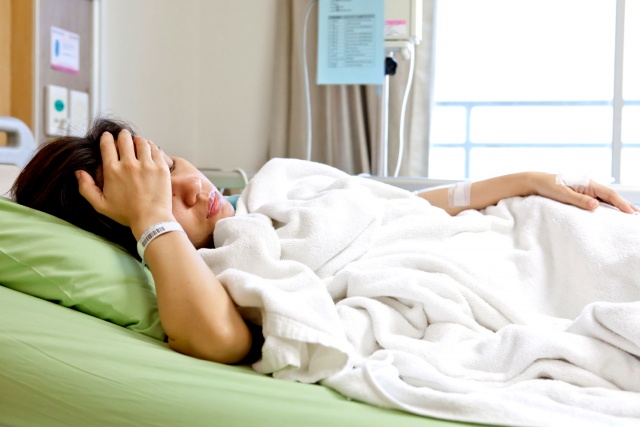
Woman needs urgent health care when the following symptoms appear:
- severe pain in the lower abdomen;
- increase in body temperature to significant levels;
- severe bleeding that does not stop for several hours;
- dizziness;
- loss of consciousness.
With absence pathological symptoms indicating the development of complications, a visit to the gynecologist is scheduled for 10-14 days after curettage. A woman may be recommended a transvaginal ultrasound to assess the current condition of the uterus.
Treatment is prescribed after receiving the results of histology.
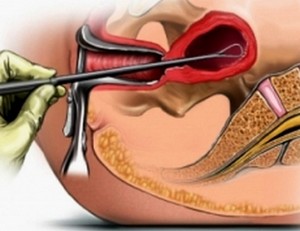
Diagnostic curettage of the uterine cavity can be carried out by several methods. This procedure is prescribed by a doctor in accordance with a strict list of symptoms that appear.
In some cases, curettage is necessary to diagnose the condition of the tissues of the uterus. In this case, it is carried out in combination with hysteroscopy, that is, examination of the walls of the uterus with a special device. There is also a separate curettage that touches the cervix.
Diagnostic curettage of the uterine cavity is the release internal cavity organ from the mucous membrane. It requires cleaning of the cervical canal and expansion of the cervix.
This procedure is carried out in medical institution and equates to surgery. Often the patient is given anesthesia because the operation is very painful. But in some cases, for example, after childbirth, it can be done without anesthesia.
There are many different indications for such an operation. Recommendations for this procedure are usually prescribed by the attending gynecologist. The most common indications for surgery are:
- effects spontaneous miscarriage;
- bleeding;
- conditions after childbirth;
- placental polyp;
- frozen pregnancy;
- ectopic pregnancy;
- endometritis;
- myoma;
- suspicion of tumor formations;
- suspicion of hyperplastic disorders.
The duration of the operation is usually 30-45 minutes. This duration is due to such actions: cleaning the cervical canal, inserting the probe into the uterine cavity, as well as the need to carefully carry out all procedures so as not to damage the walls of the vagina, the cervix and its walls.
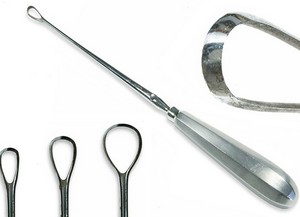 The operation is carried out by removing the mucous layer using a special surgical instrument - curettes. It resembles a long-handled spoon in shape, which should pass unhindered along the walls of the vagina and cervical canal.
The operation is carried out by removing the mucous layer using a special surgical instrument - curettes. It resembles a long-handled spoon in shape, which should pass unhindered along the walls of the vagina and cervical canal.
There is a separate type of such treatment - separate curettage. It has a wider coverage area. In this case, the cervical canal is exposed to curettage. Such a procedure can also be prescribed after a miscarriage, childbirth, with fibroids and other neoplasms.
Important advice from the editor!
If you are experiencing hair problems, Special attention It is worth paying attention to the shampoos that you use. Frightening statistics - in 97% of shampoos famous brands there are components that poison our body. The substances that cause all the troubles in the composition are designated as sodium lauryl / laureth sulfate, coco sulfate, PEG, DEA, MEA.
These chemical components destroy the structure of the curls, the hair becomes brittle, loses elasticity and strength, the color fades. Also, this muck gets into the liver, heart, lungs, accumulates in the organs and can cause various diseases. We recommend that you refrain from using products that contain this chemistry. Recently, our experts conducted analyzes of shampoos, where the first place was taken by funds from the company Mulsan Сosmetic.
The only manufacturer completely natural cosmetics. All products are manufactured under strict quality control and certification systems. We recommend visiting the official online store mulsan.ru. If you doubt the naturalness of your cosmetics, check the expiration date, it should not exceed one year of storage.
How to prepare for the procedure?
Separate and conventional curettage require the same preparation, which should begin a few days before surgery. The exception is emergency procedures, which are necessary in some cases after childbirth or miscarriage.
The following tests are required before the procedure:
- blood tests for biochemical composition, group and Rh factor;
- blood clotting test;
- analysis for syphilis, HIV, hepatitis;
- oncocytological smear.
 Equally important is the examination of the cardiovascular system. It is necessary to do an electrocardiogram, measure the level blood pressure to make sure there are no pathologies.
Equally important is the examination of the cardiovascular system. It is necessary to do an electrocardiogram, measure the level blood pressure to make sure there are no pathologies.
Usually after the appointment of the procedure before it takes at least 2 weeks. During this time, it is advisable not to take any medications.
Any drug can affect blood clotting, and therefore increase the risk of dangerous complications.
For 4 5 days it is necessary to refuse sexual contacts. It is forbidden to douche or use any vaginal suppositories, which can change the composition of the mucus of the cervical canal.
Diagnosis and treatment of diseases with scraping
If the operation is performed after childbirth or miscarriage, it is aimed at removing the unnecessary mucous layer of the uterine epithelium so that sepsis does not subsequently develop, and the woman recovers quickly. After childbirth, this procedure also helps to remove the remnants of the placenta. In this case, the operation is curative in nature.
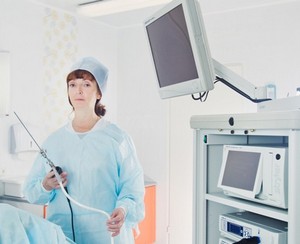 Usually, therapeutic and diagnostic curettage of the uterine cavity involves not only cleaning the upper layer of the inner uterine cavity, but also a histological analysis of the collected material, as well as examining tissues using a special device - a hysteroscope. It is equipped with a small camera that allows you to get an image displayed on the monitor.
Usually, therapeutic and diagnostic curettage of the uterine cavity involves not only cleaning the upper layer of the inner uterine cavity, but also a histological analysis of the collected material, as well as examining tissues using a special device - a hysteroscope. It is equipped with a small camera that allows you to get an image displayed on the monitor.
Such diagnostics can identify a number of dangerous diseases of the uterus, appendages and cervical canal at the very beginning of their development. If curettage is not carried out in time, the consequences of such diseases can be extremely difficult for the body.
Sometimes primary treatment can be performed on the spot, for example, removal of polyps, which are often diagnosed after a miscarriage. Polyps in some cases can degenerate into malignant neoplasms.
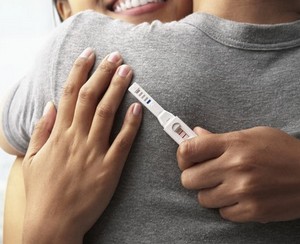 For successful pregnancy and easy childbirth, the woman should be healthy. Often, any violations cause miscarriage and other serious consequences. That is why it is extremely important to be examined by a qualified doctor in a timely manner. This helps diagnostic and therapeutic curettage. In addition, the procedure helps to solve the problem of irregular, painful or heavy periods, thereby improving the quality of life of a woman.
For successful pregnancy and easy childbirth, the woman should be healthy. Often, any violations cause miscarriage and other serious consequences. That is why it is extremely important to be examined by a qualified doctor in a timely manner. This helps diagnostic and therapeutic curettage. In addition, the procedure helps to solve the problem of irregular, painful or heavy periods, thereby improving the quality of life of a woman.
It can be summarized that curettage is of two types - therapeutic and diagnostic. Such a procedure is prescribed in many situations, for example, it is common to eliminate the consequences after a miscarriage or childbirth. It is important to know that it is equated to a surgical intervention, and therefore is carried out under a shallow anesthesia.
Curettage of the cervical canal is a fairly common operation in gynecology. It can help diagnose diseases female organs responsible for childbearing early stages development. This allows you to start treatment on time. Why else can they prescribe this procedure?
What is this procedure?
The cervical canal is the space that connects the vagina and the uterine cavity. It is on it that spermatozoa move to the egg in order to fertilize it. Inflammatory processes can pass not only inside the uterus, but also in the cervical canal. Often there can be sexually transmitted infections. However, on examination, the doctor will only see the presence of suspicious mucus. In order to establish an accurate diagnosis, a vaginal smear is taken from the patient and sent for histology. But very often the cause of the disease is not easy to find out. In such cases, curettage of the cervical canal is used.
Thanks to this procedure, it is possible to identify the disease at the initial stage of development, which greatly simplifies the treatment. During the operation, only the top layer of the endometrium is removed with a special tool, so over time, the surface of the uterus will completely restore its structure. For diagnostic purposes, curettage is used mainly to check for the presence or absence of dangerous diseases that are malignant in nature.
Types of curettage and indications
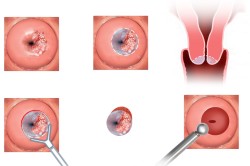 Gynecologists distinguish three types of curettage of the cervical canal.
Gynecologists distinguish three types of curettage of the cervical canal.
Diagnostic. Samples are taken for testing purposes.
Separate diagnostic curettage (RDV). When carrying out this procedure, scrapings are taken separately. First from the cervical canal, then from the uterus. Finished sample also sent for histological examination. For the purpose of diagnosing WFD, it can be carried out in cases where there are endometrial polyps, fibroids and other neoplasms on the uterus.
Scraping separate type. Separate diagnostic curettage under the control of a hysteroscope. Such an operation is carried out using a hysteroscope (a device that is designed to diagnose the state of the internal cavity of the uterus during gynecological manipulations). The hysteroscope is indispensable for abnormal shape and position of the uterus. During the diagnosis, a special tube with a camera is inserted into the uterus, with which you can control the procedure. The hysteroscope is used not only during the operation, but also after it to check the results. He is able to show whether all the neoplasms were removed and how carefully the scraping was taken.
It is worth noting that all of the above types of scraping can be used for both diagnosis and treatment. In the first case, they check whether the diagnosis is correct, and in the second, pathological neoplasms are removed.
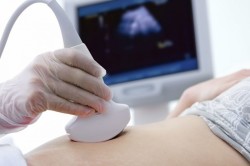 Indications for curettage of the cervical canal for the purpose of treatment:
Indications for curettage of the cervical canal for the purpose of treatment:
- Uterine bleeding. This type of bleeding can occur for a variety of reasons. This procedure able to detect them and stop the bleeding.
- Fusion of the uterine cavity (synechia). In this case, curettage is carried out in order to eliminate intrauterine adhesions. Such an operation is always performed using a hysteroscope to avoid damage to the walls of the uterus, as careless movement can cause bleeding.
- (localization of polyps on the layer of the uterus). As you know, the treatment of polyps medicines does not give any results, and therefore scraping is carried out. To date, it is the most effective method. It is very important to do such an operation on time, otherwise the polyp can turn into a malignant tumor.
- Mucosal inflammation. Before prescribing treatment, curettage is performed. This must be done for better action drug therapy.
- Thickening of the walls of the uterus, which is different from the norm. Scraping will help diagnose this problem. In addition, it is also used to treat pathology.
- The presence of remnants of fetal tissue after an abortion or membrane after childbirth. Curettage will help get rid of these foreign bodies inside the cervical canal.
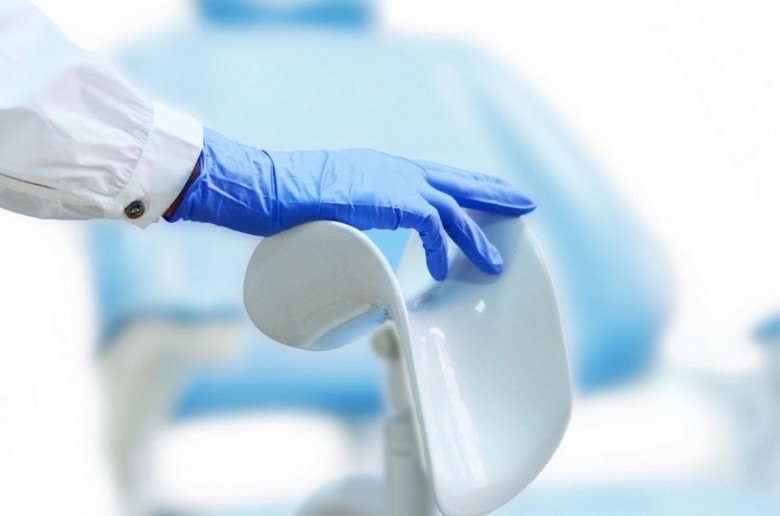 For diagnostic purposes, the procedure is prescribed for:
For diagnostic purposes, the procedure is prescribed for:
- Suspicious changes in the uterus.
- Changes in the endometrial layer.
- Prolonged, profuse, painful menstruation.
- Menstruation, during which blood clots, mucus, and other impurities are released.
- Difficulty conceiving a child.
- Preparation for another planned gynecological operation.
- Blood discharge between periods.
Preparation and conduct of the operation
Before any operation, preparation is necessary. Scraping is no exception. Surrender first necessary tests, an ultrasound of the pelvic organs, an ECG is performed. As a rule, the procedure is prescribed 2-3 days before the expected menstruation. This allows you to assess the natural state of the endometrium. On the day of the operation, the patient should not eat or drink anything.
The scraping procedure itself is very unpleasant and painful, so it is carried out under general anesthesia.
 Using a specially designed tool, the doctor cleans the cervical canal and uterine cavity. The extracted tissue particles are sent for examination. Usually, postoperative period there is no rehabilitation after such an intervention. Within a few hours, the patient can return to normal life.
Using a specially designed tool, the doctor cleans the cervical canal and uterine cavity. The extracted tissue particles are sent for examination. Usually, postoperative period there is no rehabilitation after such an intervention. Within a few hours, the patient can return to normal life.
A separate operation, which is performed by scraping, is the removal of a missed pregnancy. Its purpose is to extract a dead fetus and cleanse the uterine cavity from it. Particularly carefully treat the cervix. The samples obtained will help determine why the fetal death. With the right procedure negative consequences should not be, however, if the patient complains of abdominal pain, feeling unwell, the operation is repeated to remove the remnants of embryonic tissue.
How to behave after the operation?
If within a couple of hours after the intervention, blood has come out of the vagina, you should not sound the alarm. This is normal. Scanty discharge may appear within 7-10 days. When there is no bleeding, you should immediately contact a gynecologist.
For two weeks, it is recommended: refrain from sexual intercourse, do not use tampons, do not douche, take only a shower (bathing, visiting baths are prohibited), limit severe physical exercise. In addition, you must follow all the recommendations of the attending physician. Immediate medical attention is required if you experience abdominal pain, fever, severe bleeding lasting several hours, dizziness, loss of consciousness.
Conclusion on the topic
Curettage of the cervical canal is a widespread procedure in gynecology. Despite the fact that it is unpleasant and painful, it is still necessary to carry it out, because this operation can save female body from serious illnesses.
